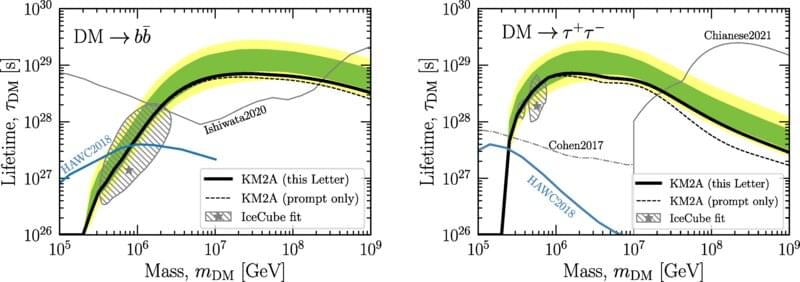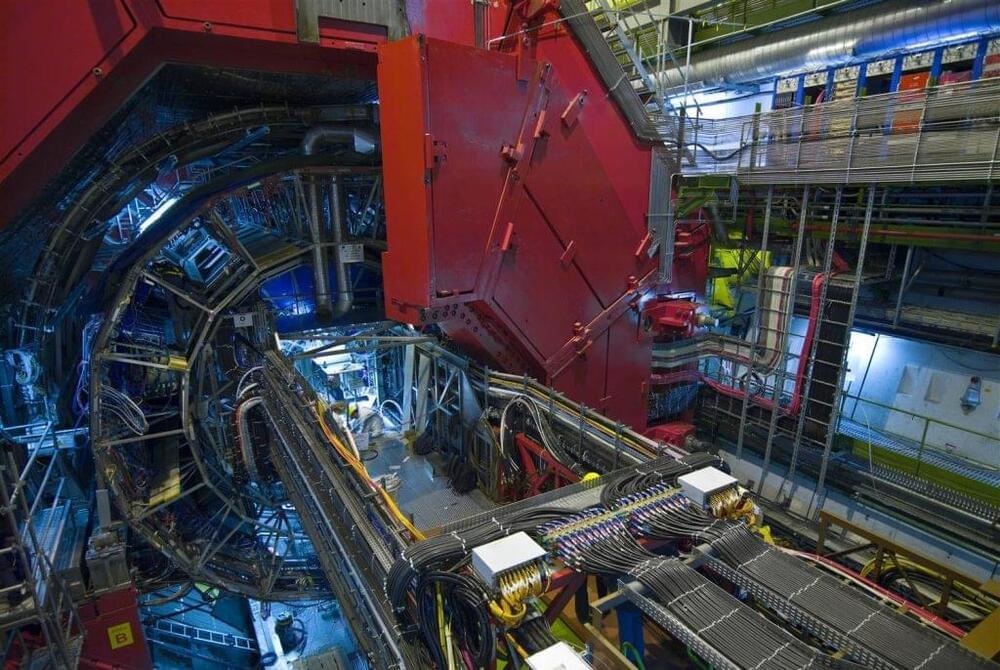Dec 29, 2022
First results from LHAASO place tighter constraints on dark matter’s lifetime
Posted by Saúl Morales Rodriguéz in categories: cosmology, particle physics
Scientists from the Large High Altitude Air Shower Observatory (LHAASO) have presented roughly 1.5 years of observational data, calculating new limits on the lifetime of heavy dark matter particles that have masses between 105 and 109 giga-electron volts.
The study, titled “Constraints on heavy decaying dark matter from 570 days of LHAASO observations,” was recently published in Physics Review Letters.
The gravitational model of the Milky Way shows that there is a very high density of dark matter in the galactic center, and the gamma rays produced by the decay of this dark matter will radiate from the galactic center to the surroundings for hundreds of light-years or even thousands of light-years. However, for a long time, the observation of ultra-high-energy gamma rays produced by heavy dark matter has been complicated by the presence of other background radiation.


















